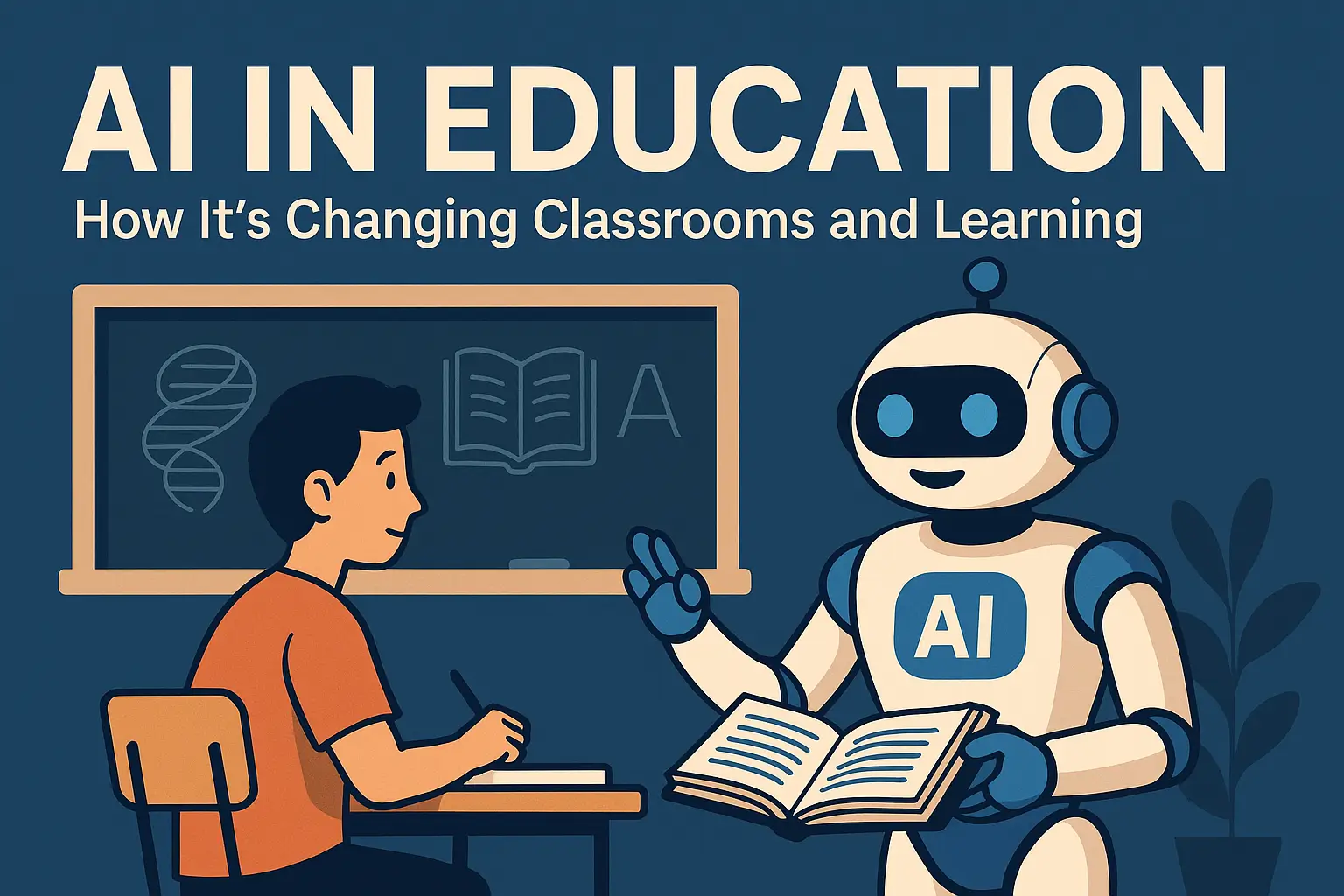Artificial Intelligence (AI) is rapidly transforming industries—and education is no exception. From personalized learning platforms to intelligent tutoring systems, AI is reshaping how students learn, how teachers teach, and how educational institutions operate. With AI tools becoming more accessible, the classroom of the future is already taking shape today.
In this article, we’ll explore how AI is changing education, the benefits it brings, and the challenges we must address along the way.
How AI Is Used in Education
AI enhances education through automation, customization, and interactivity. These applications are designed to make learning more efficient, accessible, and tailored to individual needs.
1. Personalized Learning
AI analyzes student performance data to adapt content, pace, and assessments to each learner’s level.
Examples:
- Adaptive learning platforms like Khan Academy and Coursera suggest exercises based on a student’s past performance.
- Tools like Squirrel AI create customized lesson paths in real time.
Benefit: Students learn at their own speed, reducing frustration and enhancing mastery.
2. Intelligent Tutoring Systems
These AI-powered systems provide instant feedback and step-by-step guidance, mimicking the support of a human tutor.
Example: Carnegie Learning offers math tutoring that evaluates student responses and adapts future problems accordingly.
Benefit: Students receive individualized help without needing one-on-one attention from teachers.
3. Automated Grading and Feedback
AI can grade multiple-choice quizzes, short essays, and even detect plagiarism, freeing up time for educators to focus on instruction.
Examples:
- Grammarly and Turnitin for writing evaluation and originality checks
- EdTech platforms that generate instant quiz feedback
Benefit: Saves time and ensures consistent assessment standards.
4. Smart Content Generation
AI can create content like:
- Summaries of lengthy readings
- Flashcards and quizzes based on textbook material
- Interactive learning modules tailored to curriculum
Example: platforms like Quizlet use AI to help students study more effectively with generated learning sets.
5. Virtual Classrooms and Chatbots
AI chatbots can assist with answering student questions, reminding them about deadlines, or even explaining difficult topics.
Example: Georgia State University uses an AI chatbot to reduce summer melt by answering admissions and financial aid questions.
Benefit: 24/7 support helps students stay on track, especially in large or online learning environments.
6. Language Translation and Accessibility
AI breaks language barriers and supports students with disabilities.
Examples:
- Google Translate helps non-native speakers follow lessons.
- Speech-to-text tools support hearing-impaired students.
- Text-to-speech tools assist visually impaired learners.
Benefits of AI in Education
- Improved Student Outcomes: Tailored content and timely feedback enhance comprehension and retention.
- Efficiency for Educators: Automation saves time on administrative and grading tasks.
- Scalable Support: AI can help thousands of students at once, regardless of location or time zone.
- Data-Driven Insights: Educators receive actionable data on student performance and engagement.
- Equal Opportunities: AI tools can help level the playing field for students with learning challenges or different language backgrounds.
Challenges and Concerns
Despite its benefits, integrating AI into education comes with critical considerations:
1. Data Privacy
AI systems collect and analyze vast amounts of student data. Schools must ensure compliance with regulations (e.g., FERPA, GDPR) and protect student privacy.
2. Algorithmic Bias
If AI tools are trained on biased datasets, they may reinforce inequalities in assessments or access to resources.
3. Reduced Human Interaction
Over-reliance on AI could diminish teacher-student relationships, which are vital for motivation and social development.
4. Technology Gaps
Not all students have equal access to devices or reliable internet, potentially widening the digital divide.
5. Teacher Readiness
Educators need proper training to integrate AI tools effectively without feeling overwhelmed or displaced.
Future Trends in AI and Education
- Emotion AI: Systems that detect student emotions to adjust content delivery in real time
- AI-Driven Career Counseling: Matching student skills and interests to career paths
- Gamification with AI: Adaptive educational games that evolve with the learner
- Predictive Analytics: Identifying students at risk of dropping out before issues escalate
Final Thoughts: AI as a Teaching Partner
AI is not here to replace teachers—it’s here to empower them. By automating routine tasks, personalizing learning, and providing real-time insights, AI allows educators to focus more on mentoring, empathy, and inspiration.
As long as AI is used responsibly and inclusively, it can help create a more engaging, equitable, and effective learning experience for students around the world.
